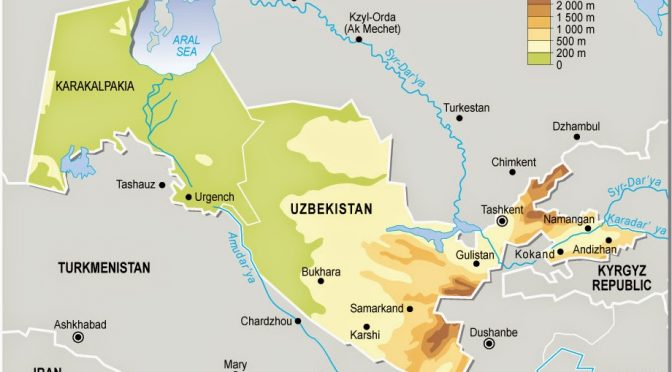Uzbekistan, a landlocked country in Central Asia, is well-known for its abundant natural resources, particularly in the fossil fuel sector. However, the nation is now looking to diversify its energy mix and capitalize on its immense potential for renewable energy, specifically solar and wind power. With its favorable geographic location, vast open spaces, and strong government support, Uzbekistan is poised to become a regional leader in renewable energy production.
The country’s solar energy potential is immense, thanks to its sunny climate, with an average of 300 sunny days per year. According to the Asian Development Bank, Uzbekistan has the potential to generate up to 51 billion kWh of solar energy annually, which is equivalent to the energy produced by 15 nuclear power plants. Moreover, the country’s flat terrain and vast deserts provide ample space for the installation of large-scale solar power plants.
Wind energy also holds significant promise for Uzbekistan. The country’s windy regions, particularly in the western and southern parts, have the potential to generate up to 40.7 billion kWh of wind energy per year. The country’s average wind speed is 4-5 meters per second, with some areas experiencing speeds of up to 8-9 meters per second, making them suitable for wind power generation.
Recognizing the importance of renewable energy for sustainable development and energy security, the government of Uzbekistan has set ambitious targets for the sector. By 2030, the country aims to increase the share of renewable energy in its energy mix to 25%, with solar and wind power playing a significant role in achieving this goal. To this end, the government has introduced a range of policies and incentives to attract investment in renewable energy projects, including tax breaks, customs exemptions, and feed-in tariffs.
One of the key initiatives undertaken by the government to promote solar and wind energy is the establishment of the International Solar Energy Institute (ISEI) in Tashkent. The ISEI aims to develop the country’s solar energy sector by conducting research, providing training, and facilitating international cooperation. The institute has already attracted several international partners, including the United Nations Development Programme (UNDP), the European Bank for Reconstruction and Development (EBRD), and the Asian Development Bank (ADB).
In recent years, Uzbekistan has witnessed a surge in solar and wind power projects, both in terms of capacity and investment. In 2020, the country’s first large-scale solar power plant, the 100 MW Navoi Solar Power Project, was commissioned. The project, developed by the UAE-based company Masdar, is expected to generate 270 GWh of electricity per year, enough to power 31,000 households. Moreover, several other solar power projects, with a combined capacity of over 2 GW, are currently in the pipeline.
The wind energy sector has also seen significant growth, with the country’s first wind farm, the 100 MW Karakalpakstan Wind Farm, set to be commissioned in 2022. The project, developed by the Chinese company Lioaning Lide, is expected to generate 375 GWh of electricity per year. Furthermore, the government has signed agreements with international companies, such as ACWA Power and Total Eren, to develop additional wind power projects with a combined capacity of over 1 GW.
In conclusion, Uzbekistan’s vast solar and wind energy potential, coupled with strong government support and favorable investment conditions, presents a unique opportunity for the country to become a regional leader in renewable energy production. By harnessing its solar and wind resources, Uzbekistan can not only diversify its energy mix and enhance its energy security but also contribute to global efforts to combat climate change and promote sustainable development.


